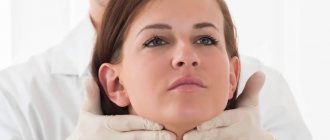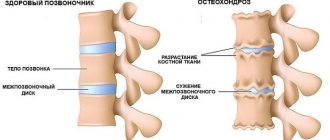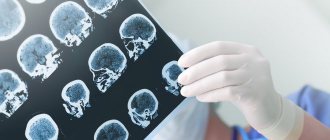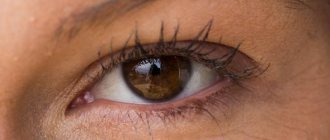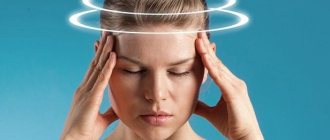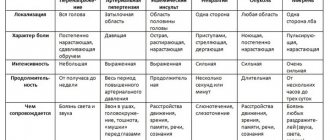This term has other meanings, see Apraxia (meanings).
| Apraxia | |
| ICD-10 | 48.248.2 |
| ICD-9 | 438.81438.81, 784.69784.69 |
| DiseasesDB | 31600 |
| MedlinePlus | 003203 |
| eMedicine | neuro/438 |
| MeSH | D001072 |
Apraxia
(Latin apraxia from ancient Greek ἀπραξία “inactivity, inaction”) - a violation of purposeful movements and actions while maintaining the elementary movements that constitute them; occurs with focal lesions of the cerebral cortex or the pathways of the corpus callosum.
Apraxia can be limited in nature, that is, movement disorders can manifest themselves in one half of the body, one limb, facial muscles (oral apraxia); when the corpus callosum is affected, left-sided apraxia is characteristic.
Apraxia is classified both by the location of brain lesions and by symptomatic manifestation; the complex of symptoms depends on the functionality of the affected area of the brain.
Classification of apraxia
In medicine, there are many types of this pathological process. According to the degree of progression, the following forms are distinguished:
- Limited. With this disease, disorders of the musculoskeletal system are detected, manifesting only on one side of the face or the entire body.
- Double sided. Here, bilateral pathology of the cerebral cortex develops or the frontal segment is damaged.
On this topic
- Tremor
All about essential tremor
- Natalia Sergeevna Pershina
- March 26, 2020
The clinical symptoms of the disease are determined by the functioning of the affected area of the brain.
In addition, this pathology is divided into types, which depend on the location of lesions in the brain structures.
Ideatorial
This form implies a violation of the execution of alternate actions. But a person does them separately. For example, to write text with a pen, you must first remove the cap from it or open it using a special mechanism, then direct the ink to a piece of paper. But the person begins to scratch with the pen from the other side or without opening it.
Constructive
In this case, the ability to depict one object from its individual components, for example, a triangle made of sticks, is impaired.
Kinetic
With this type of disease, the patient is able to control his actions, but he loses automated motor experience. His motor activity decreases and becomes chaotic. A person with this form of pathology is forced to consciously monitor his movements all the time, even if he does memorized actions.
Dynamic
This form appears against the background of damage to deep nonspecific brain structures. In this case, it is difficult to assimilate and automate unstudied motor programs. When trying to perform well-known actions, failures may appear, but often the patient himself notices them.
Motor
Here the patient is unable to take any active action at the request of the specialist. A person is aware of what he needs to do, but is unable to do it, even if it is clearly shown to him. For example, he will not be able to tie or untie his shoelaces.
There are afferent and efferent motor apraxia. In the first form, the patient is unable to correctly correlate the dimensions of the object he wants to use; the hand cannot take the required position to perform a certain action.
For example, take a knife and cut vegetables. In the second form, the patient finds it difficult to make several consecutive movements. Often in people with this pathology, pronounced perseverations are disrupted.
Kinesthetic (ideomotor)
In this case, the patient’s somatotopic and spatial representations are erased from memory, but planning of motor activity is not lost. People with this form of the disease have a impaired understanding of motor processes and the performance of basic actions. For example, when trying to put on a sweater, a person cannot insert his hand into the sleeve correctly.
Apraxia of walking
Here changes occur in the natural gait, it becomes uncertain, the person stumbles a lot and falls. With this type of disease, sensory and motor disorders are not diagnosed.
Oral
Here speech is impaired, the patient is unable to reproduce any sounds. He experiences great difficulty in performing articulatory movements with the participation of the muscles of the oral cavity. For example, he will not be able to stick his tongue out far or make his lips appear like a tube.
Spatial apraktoagnosia
With this form of the disease, a person has difficulty writing letters and cannot make out the display of text in the mirror.
Facial or facial
The form of the disease is characterized by speech impairment (dysarthria).
Alien hand syndrome
In this case, one or both hands exist on their own, that is, the sick person cannot control them. Often this syndrome is accompanied by attacks of epilepsy. For example, one hand can scratch your hair while the other hand ruffles it. Also, a sore limb can harm itself, that is, dip its fingers in boiling water.
Conductor
It is difficult for a person to perform motor operations behind a doctor, although his independent activity is preserved. With this form, the patient is able to perform simple doctor’s actions.
Dissociative
The patient has difficulty performing body movements at the request of the doctor, although the ability to perform and repeat many actions remains. With this type, the connection between the motor areas of the brain and the sensory components of speech is disrupted.
Apraxia of speech
It is characterized by a violation of the participation of a group of muscle fibers in speech reproduction. She becomes slurred and illegible.
Each type of disease has its own specifics and causes. When a certain form is diagnosed, appropriate therapy is prescribed.
Apraxia by localization of the pathological process in the brain[ | ]
- frontal apraxia
(apraxia frontalis) is apraxia with damage to the cortex of the prefrontal region of the cerebral hemispheres, manifested by a violation of the programming of complex, sequential motor acts. - motor apraxia
(apraxia motoria) is an apraxia in which the patient is able to outline a plan for the sequence of actions necessary to perform a complex motor act, but cannot carry it out. - premotor apraxia
(apraxia praemotoria; synonym: dynamic apraxia) - apraxia caused by deautomation of motor acts and their pathological inertia; characterized by impairment of the skills necessary to transform individual movements into more complex ones; observed with damage to the premotor area of the cerebral cortex. Occurs when the 6th cytoarchitectonic Brodmann area is damaged. - cortical apraxia
(apraxia corticalis) is an apraxia that occurs when the cortex of the dominant cerebral hemisphere is damaged. - bilateral apraxia
(apraxia bilateralis) is a bilateral apraxia that occurs with pathological foci in the inferior parietal lobe of the dominant cerebral hemisphere.
Causes
This pathology occurs for several reasons. The main and main one is brain damage, which occurs as a result of serious injury, a heart attack, or the development of tumors in the head.
This disease causes a degenerative process, which involves localization of the affected areas in the parietal lobes. In this part of the brain, motor actions obtained as a result of all life activities are programmed.
Also possible reasons for the development of this pathology are damage to other parts of the brain, namely: the frontal lobe, corpus callosum, premotor cortex.
On this topic
- Tremor
Why is my head shaking?
- Natalia Sergeevna Pershina
- March 26, 2020
To identify the factor in the formation of apraxia, a specialist examines the patient and checks his motor activity with simple, specific movements. For example, wave your hand as if in greeting, clap your hands.
During the examination, the doctor checks the strength of the muscle fibers that were involved in the observed group muscles. This is necessary to exclude paresis as a factor in the existing disorder.
Symptoms
The main signs of such a disease are manifested in the inability to regulate motor acts of the facial muscles, make precise movements, the inability to repeat actions after another person, sometimes depict something simple on paper, use any tool or put on clothes.
With apraxia of walking, there is a strong stoop of the body, a chaotic gait, and the person is unable to overcome a basic obstacle.
Characteristic symptoms of this pathology:
- Difficulty performing alternating movements on command. The patient does not remember the sequential movements of certain actions.
- The emergence of difficulties when carrying out motor activities that require orientation in space. A person’s understanding of the relationship between space and his actions is disrupted.
- Uncertain walking with small steps.
- Difficulty opening the eyes.
- Sustained performance of individual movements and jamming on them (kinesthetic apraxia).
There are often cases when a person does not realize that he is sick with this pathology. Sometimes the symptoms of such a deviation do not cause concern, and are diagnosed only after certain tests are performed.
Diagnostics
Diagnosis must be carried out not only to determine the form of the disease, but also to prescribe a number of treatment procedures that alleviate the person’s condition.
On this topic
- Tremor
Everything you need to know about limb tremors
- Natalia Sergeevna Pershina
- March 26, 2020
To confirm the diagnosis, the following studies are performed:
- Analysis history and complaints. All possible factors provoking this disease are taken into account here: what symptoms did the person present with (weakness in the lower extremities, uncertainty in gait, etc.), whether there are any brain diseases (injuries, cerebral circulatory disorders) and whether there are family members with similar symptoms .
- Neurological examination. At this stage, a thorough examination of the patient takes place, and possible concomitant neurological disorders are identified (pathologies of auditory and visual functions, unclear speech, unusual sensation of one’s body).
- Consultation with a neuropsychologist. When examined by a specialist, the person’s condition is assessed using a special questionnaire, psychological interviews and questionnaires.
- Magnetic resonance and computed tomography of the head. With this study, a separate layer of the brain is studied, and the causes of the development of apraxia are identified (focal lesions that caused disruption in the circulatory system, the presence of tumors, head injuries).
- Consultation with a neurosurgeon and psychologist.
All these methods allow you to correctly diagnose the pathology. When the exact cause of this disease is identified, special treatment methods are prescribed to reduce symptoms and improve quality of life.
Experts' forecast and likely consequences
Depending on the nature of the pathology that became the causative agent of apraxia, forecasts are made. Therefore, specialists take measures to eliminate the causes of the disease and improve movements performed voluntarily.
Due to the fact that there is no treatment for the disease as such, but only supportive methods, a number of consequences are observed:
- the patient’s quality of life sharply decreases due to the inability to experience certain tactile sensations and body movements;
- self-care is impossible for people suffering from the disease, so constant care is required;
- and of course, there can be no talk of engaging in any type of work.
Apraxia is a type of disease that develops the patient's disability.
Treatment
Therapy for this disease consists of treating the underlying cause that led to its development. In practice, there is no specific type of treatment that would effectively help combat apraxia. General methods are used to eliminate symptoms:
- controlling blood pressure;
- taking medications that help improve cerebral blood flow and brain nutrition during the chronic stage of cerebrovascular accident;
- carrying out cognitive rehabilitation,
- surgical removal
- taking medications that improve neuropsychological functioning;
- speech therapy;
- physiotherapeutic procedures.
These methods will help alleviate the course of the disease in humans. Do not neglect the treatment prescribed by a specialist.
Forecast
The outlook for people with apraxia will depend on individual circumstances. If a person has apraxia after suffering a stroke or other neurological disorder, treating the underlying condition will help reduce or eliminate the symptoms of apraxia. Some people's apraxia symptoms will improve over time, while others may experience less improvement. Some people continue to improve for several years or even decades. With the right support from loved ones, people with apraxia can learn to manage their condition.
Related article: What are speech disorders?

